Latest News
August 13, 2010
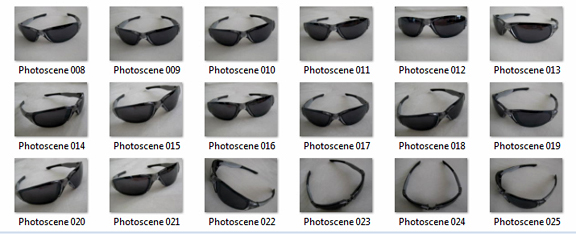
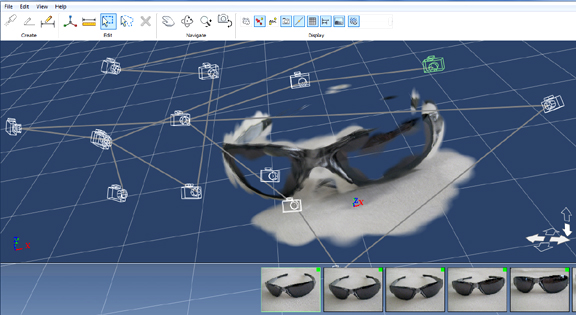
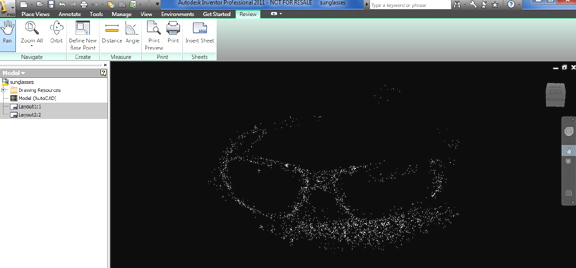
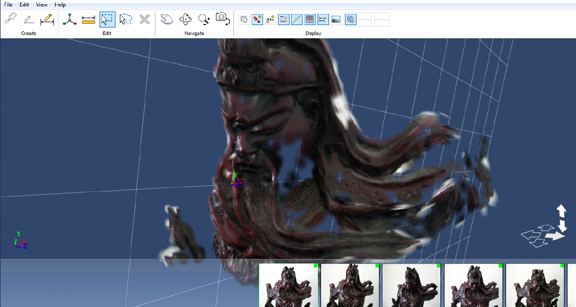
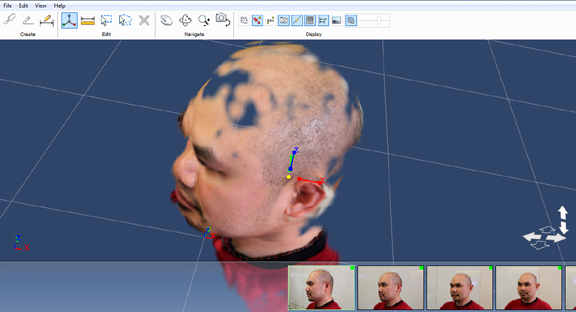
Suppose someone gives you about 20-25 reference photos of an object, do you think you can easily construct a 3D model of the object or extract a bunch of points that define its profile in 3D space?
That’s precisely the idea behind Photo Scene Editor for Project Photofly, one of the latest technology previews at Autodesk Labs. The way it works is pretty straightforward. You download and install an app called Photo Scene Editor, a light-weight 3D display environment. Then you upload a bunch of source photos as reference to construct the 3D model.
This is where cloud-hosted Photofly kicks in. It’s the technology that analyzes your photos, identify similar shapes and patterns in them, extrapolate camera angles, and construct a 3D model, using the images you provided as skin texture. The computing takes place in the cloud, on a remote server farm, so your CPU doesn’t have to pay the penalty for it. You can continue to work on your PowerPoint slides, mesh your analysis model, or (in my case) check in with your Facebook friends. If you’d rather not sit and stare at the progress bar as the software processes your scene, you have the option to let Photofly notifies you when your scene is ready.
The completed scene comprises point clouds, derived from the pixel triangulation to reconstruct the source object. You can select a point in one photo, then identify the same points on other photos to improve the software’s triangulation accuracy. You may also enter a reference distance (a dimension you know to be accurate), then extrapolate the distance between other points.
This workflow bypasses the traditional point-cloud acquisition methods: laser scanners and survey equipments. Since digital cameras have become as ubiquitous as cellphones among the general population, it allows those with limited exposure to design and engineering software to participate.
On the other hand, if you have AutoCAD or Inventor, you may import the point clouds into your 3D modeling session. The data will prove helpful in 3D sketch mode, where you can rebuild the profile of the object in splines and curves. While objects with simple geometry can easily be reproduced in a CAD program, the captured point clouds give you an advantage in reconstructing complex objects with asymmetrical features and odd angles.
The Gamble on Cloud-Hosted Clusters
Photofly is another indication that Autodesk is forging ahead with the cloud-hosted service model. The lineup at Autodesk Labs reveal the company has identified areas where it can take advantage of remote clusters for rendering (Project Neon, Project Showroom), markup and collaboration (Project Butterfly, Project Freewheel), design optimization (Project Centaur), and application streaming (Project Twitch).
At present, these technologies merely serve as tantalizing glimpses of what Autodesk R&D is working on. But the foundation—the delivery infrastructure—has been laid. When the previewed applications become mature and robust enough, Autodesk can easily begin delivering them as optional services and add-ons to AutoCAD, Autodesk Inventor, Autodesk Revit, and other core packages. The primary modeling and design programs, however, will most likely remain on the desktop for the foreseeable future.
It’s a gamble that’s bound to meet with criticism from those who believe vendors—specifically, cloud delivery platform providers—have not done enough to address the security and IP concerns associated with remote computing. Personally, I believe the gamble on cloud will pay off, because the benefits—costs, speed, efficiency, and ease of use—outweigh the risks.
For more, watch the video below:
Subscribe to our FREE magazine, FREE email newsletters or both!
Latest News
About the Author
Kenneth Wong is Digital Engineering’s resident blogger and senior editor. Email him at [email protected] or share your thoughts on this article at digitaleng.news/facebook.
Follow DE





